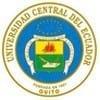Check out what is new in Poultry Industry
Find the best technical articles, forums, and videos on Poultry Industry at Engormix. Enter now and interact with the world's largest agricultural social network.
1. Introduction Salmonella enterica is one of the main causes of foodborne disease, representing a worldwide problem for public health systems [1]. This species consists of more than 2600 serovars described to date [2,3]. S. enterica serovars can cause infections in humans ranging from gastroenteritis, associated with non-typhoidal Salmonella (NTS), to typhoid fever [4]. NTS are estimated to cause more than 93.8 million infections and 155,000 deaths per year globally [5,6]. The main...
Comments : 0
Recommendations: 0
1. Introduction Non-typhoidal Salmonella (NTS) comprises multiple serovars of Salmonella enterica that can cause self-limiting or invasive enteric disease and are transmitted to humans mainly through contaminated food [1,2]. The consumption of poultry products represents a common route of NTS transmission to humans [3], and the increasing prevalence of antimicrobial resistance (AMR) among NTS isolates has become a serious concern [4,5]. Most gastrointestinal infections...
Comments : 0
Recommendations: 0
.jpg&w=3840&q=75)
"Listen to Dr. Markus Wiltafsky-Martin as he discusses the recent USA patent validating the scientific advancements of AMINONIR® RED and its unwavering accuracy in providing reliable nutritional data...
Comments : 0
Recommendations: 2
.jpg&w=3840&q=75)
Annie Kneedler (Chief of Party – USAID TRANSFORM at Cargill) comments on the TRANSFORM project activities and how to improve animal health through global collaboration, in this Engormix interview....
Comments : 1
Recommendations: 2
.jpg&w=3840&q=75)
Mr. O.P. Singh, Managing Director of ABTL, speaks about how ABTL differentiates itself as a leader in providing affordable poultry enzyme solutions...
Comments : 0
Recommendations: 2
.jpg&w=3840&q=75)
Jose Roberto Gonçalves (Regulatory and Institutional Affairs Director at BRF) comments on the goals of the Brazilian poultry industry and offers insights on consumer expectations, in this Engormix interview....
Comments : 0
Recommendations: 3
.jpg&w=3840&q=75)
Phil Boyd (Executive Director, Turkey Farmers of Canada) comments on the challenges and opportunities in the turkey industry, in this Engormix interview....
Comments : 0
Recommendations: 0
.jpg&w=3840&q=75)
Jean Stoll (Global Head of Protein and Dairy at Maersk) talks about innovation, reach, transit times, and requirements of poultry shipping, in this Engormix interview....
Comments : 0
Recommendations: 0
.jpg&w=3840&q=75)
Nan-Dirk Mulder (Senior Global Specialist Animal Protein at Rabobank) offers insights into the markets, the value chain, and the global poultry industry, in this Engormix interview....
Comments : 0
Recommendations: 1
.jpg&w=3840&q=75)
Jim Sumner (Treasurer and former President of IPC) shares his experience on the International Poultry Council and the poultry industry, and comments on the challenges to face, in this Engormix interview....
Comments : 0
Recommendations: 0
Tony Mcdougal, a freelance journalist, once wrote in Poultry World, "The rising demand for eggs, meat, and milk in recent decades has driven higher EU imports of grains and cereals from developing countries with more tropical climates, where the occurrence of mycotoxins is higher—thus raising the prevalence of mycotoxins in EU...
Comments : 0
Recommendations: 1
.jpg&w=3840&q=75)
Gérard Léveque (Global Manager Animal Health at Hendrix Genetics) talks about the main challenges in the poultry industry and how to better communicate advances in genetics, in this Engormix interview....
Comments : 0
Recommendations: 0
NHU: Net profit in 2023 was 2.704 billion yuan, down 25.30% YoY. On April 22, Zhejiang NHU Co., Ltd. released the 2023 annual report,...
Comments : 0
Recommendations: 0
.jpg&w=3840&q=75)
Aidan Connolly (AgriTech Capital President) comments on how much and how fast can the poultry industry grow by embracing new technologies, in this Engormix interview....
Comments : 1
Recommendations: 0
.jpg&w=3840&q=75)
Mario Assayag (General Technical Manager Latin America at Aviagen) comments on the advances in biosecurity standards worldwide, in this Engormix interview....
Comments : 0
Recommendations: 0
.jpg&w=3840&q=75)
Paulo Rigolin (Vice President of Alltech Latin America) talks about the experience of participating in the IPC Annual Meeting in Buenos Aires, Argentina, in this Engormix interview....
Comments : 0
Recommendations: 0
.jpg&w=3840&q=75)
Gonzalo Moreno (FENAVI Executive President) comments on the relevance of a sustainability program as a managerial tool, and how to better communicate its impact, in this Engormix interview....
Comments : 0
Recommendations: 0
.jpg&w=3840&q=75)
Gonzalo Moreno (FENAVI Executive President) comments on all the activities prepared for the 2024 FENAVI Congress that will take place from June 4th to 6th, in Bogota, Colombia....
Comments : 0
Recommendations: 3
.jpg&w=3840&q=75)
Paul Bredwell (Vice President of Environmental Programs at USPOULTRY) comments on the framework progress, great reception in the industry, and how to involve more people from the value chain, in this Engormix interview....
Comments : 0
Recommendations: 0



00167-168.jpg&w=3840&q=75)




.jpg&w=3840&q=75)







.jpg&w=3840&q=75)

















.jpg&w=3840&q=75)






